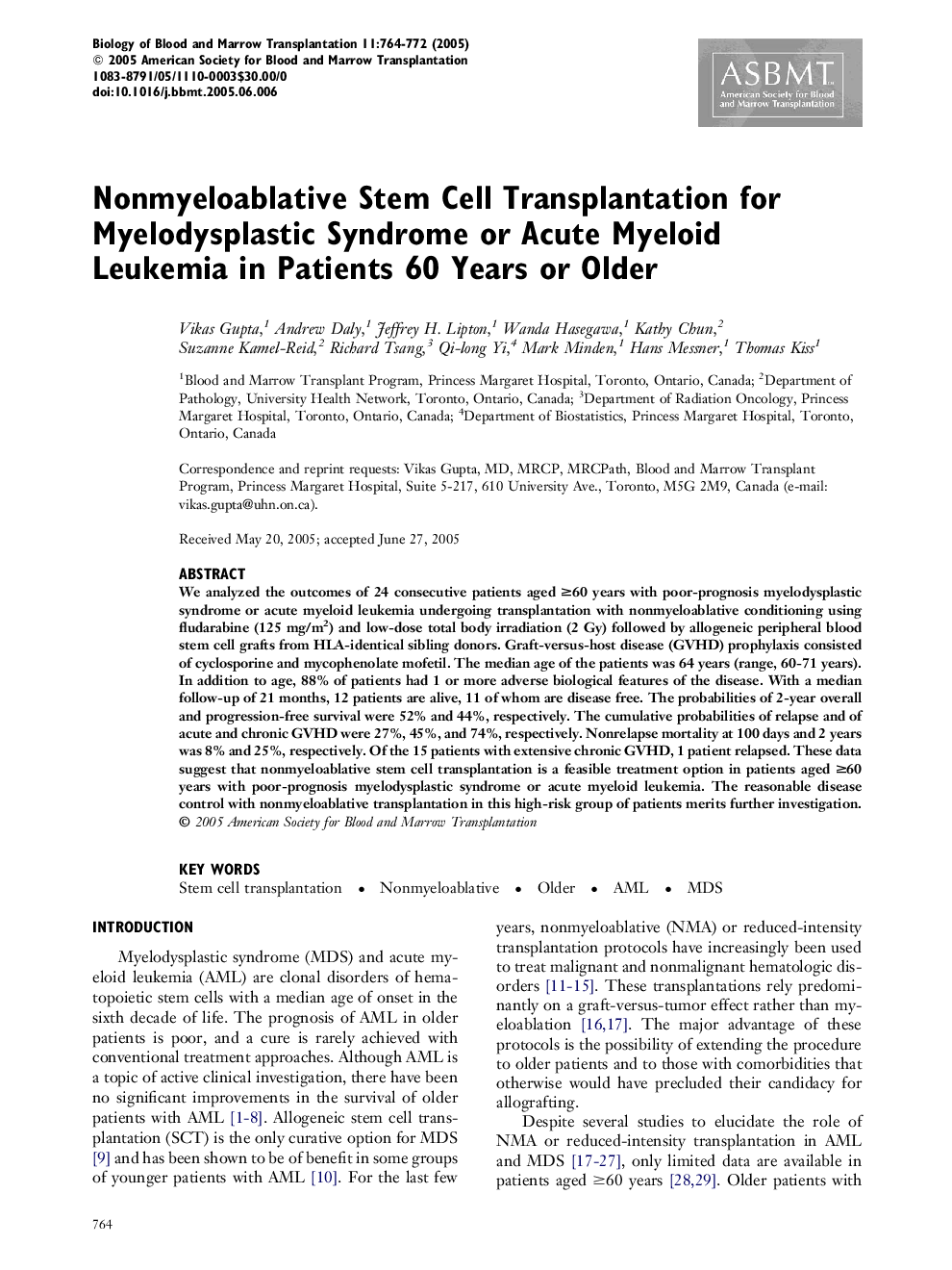| Article ID | Journal | Published Year | Pages | File Type |
|---|---|---|---|---|
| 9904144 | Biology of Blood and Marrow Transplantation | 2005 | 9 Pages |
Abstract
We analyzed the outcomes of 24 consecutive patients aged â¥60 years with poor-prognosis myelodysplastic syndrome or acute myeloid leukemia undergoing transplantation with nonmyeloablative conditioning using fludarabine (125 mg/m2) and low-dose total body irradiation (2 Gy) followed by allogeneic peripheral blood stem cell grafts from HLA-identical sibling donors. Graft-versus-host disease (GVHD) prophylaxis consisted of cyclosporine and mycophenolate mofetil. The median age of the patients was 64 years (range, 60-71 years). In addition to age, 88% of patients had 1 or more adverse biological features of the disease. With a median follow-up of 21 months, 12 patients are alive, 11 of whom are disease free. The probabilities of 2-year overall and progression-free survival were 52% and 44%, respectively. The cumulative probabilities of relapse and of acute and chronic GVHD were 27%, 45%, and 74%, respectively. Nonrelapse mortality at 100 days and 2 years was 8% and 25%, respectively. Of the 15 patients with extensive chronic GVHD, 1 patient relapsed. These data suggest that nonmyeloablative stem cell transplantation is a feasible treatment option in patients aged â¥60 years with poor-prognosis myelodysplastic syndrome or acute myeloid leukemia. The reasonable disease control with nonmyeloablative transplantation in this high-risk group of patients merits further investigation.
Related Topics
Life Sciences
Biochemistry, Genetics and Molecular Biology
Cancer Research
Authors
Vikas Gupta, Andrew Daly, Jeffrey H. Lipton, Wanda Hasegawa, Kathy Chun, Suzanne Kamel-Reid, Richard Tsang, Qi-long Yi, Mark Minden, Hans Messner, Thomas Kiss,
